IntMath Newsletter: Series, clock, Simpsons
By Murray Bourne, 28 Jun 2018
28 Jun2018
In this Newsletter:
1. New on IntMath: Infinite series, Spinning clock
2. Resources: Simpsons math, Unknowables
3. Math in the news: Plimpton 322
4. Math movies
5. Math puzzle: EFFEKT
6. Final thought: Actions
1. New on IntMath
(a) Infinite series applets background
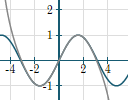 |
Infinite series have played an important role in the development of mathematics, especially calculus. Here's some background to some applets I wrote recently. |
(b) Math Art in Code: Spinning clock
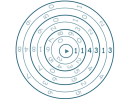 |
This interesting take on the spinning clock concept is made using CSS (for the rotation and font changes) and javascript. See: |
2. Resources
(a) Simpsons math
The Simpsons is a popular sitcom that's been running since the late 1980s. There are many mathematical references throughout the show, not a surprise since Al Jean, Executive Producer and head writer, has a bachelor's degree in mathematics from Harvard University.
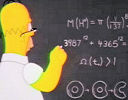 |
Dr. Sarah J. Greenwald (Appalachian State University) and Dr. Andrew Nestler (Santa Monica College) have put together a guide to mathematics and mathematicians on The Simpsons. Update: Unfortunately, this guide is no longer -the link disappeared |
It includes suggestions for incorporating some of it into lessons.
(b) Top 10 Unknowable Things
We can have Known Knowns (things we know we know), Known Unknowns (things we know we don't know), Unknown Unknowns (things we aren't even aware of that nobody knows), and Unknown Knowns (things we don't know but others do).
 |
This interesting article from Listverse is a readable look at mostly mathematical "unknowable things". |
3. Math in the news
Dispute over Babylonian tablet
Dr. Daniel Mansfield of UNSW, Australia studied the "Plimpton 322" baylonian tablet, which is dated around 1800 B.C.E. His conclusion was the Babylonians understood trigonometry more than 1,000 years before Pythagoras, and that it was "better".
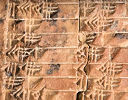 |
You can find a summary here: Ancient Babylonian tablet could change the way we learn math |
There's a short video at the top of that article in which Mansfield explains his view. I was OK with it until around the 1 min 20 sec point where he says, "In Base 10, there are only two exact fractions." Ah, not so. This prompted me to do a bit more digging and I found this scathing critique by Evelyn Lamb of Scientific American:
Don't Fall for Babylonian Trigonometry Hype
The lesson: Don't believe anything you read or watch. Always double check the facts with independent sources.
4. Math Movies
(a) Why can't you divide by zero?
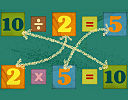 |
TED-Ed discusses why we shouldn't divide by zero, even though mathematicians have changed the rules before. |
(b) Big data could help end world hunger
 |
Mallory Soldner outlines the potential for using the vast amount of world data to solve critical problems. |
5. Math puzzles
The puzzle in the last IntMath Newsletter was about "lucky" numbers. The correct answer with explanation was posted by JDK.
New math puzzle: Model the EFFEKT observation tower

The EFFEKT tower in Denmark is a beautiful structure that allows visitors to enjoy forest views as they spiral to the top.
The challenge is to model the spiral walkway's height, z as a function of x and y. That is, your answer will be in the form z = f(x, y). The dimensions for the tower (in rather small font) are given in diagrams towards the bottom of the page linked above.
Bonus: Graph it using GeoGebra (or a similar 3D-capable grapher).
You can leave your response here.
6. Final thought

Actions certainly speak louder than words — and even more so than self-perceptions.
"We judge ourselves by what we feel capable of doing, while others judge us by what we have already done."
[Henry Wadsworth Longfellow]
Until next time, enjoy whatever you learn.
See the 2 Comments below.
4 Jul 2018 at 10:55 pm [Comment permalink]
Hello I dearly enjoy your newsletter please keep sending it regularly
How can I download the spinning clock in my android phone
7 Jul 2018 at 3:59 pm [Comment permalink]
@JDK: I've added this stripped down page: Spinning clock.
On your phone, when you are on that page you can choose Settings (3 dots at top right), then "Add to home screen". This will give you a link (looks like an app link) on your home screen.
If you click on the spinning clock, it will open in a full window. Click again to get back to an ordinary browser window.
Let me know how it works for you.